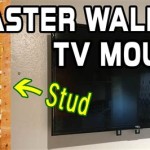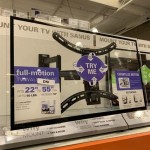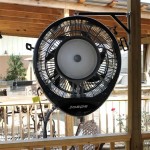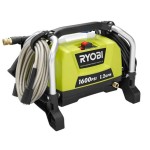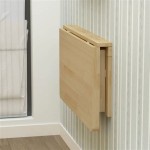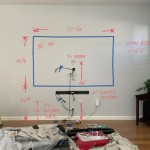Wall Mounted Mailbox With Planter: Functionality Meets Aesthetics
The wall mounted mailbox with planter presents a compelling solution for homeowners seeking to enhance their curb appeal while simultaneously maximizing space. This innovative design integrates two essential exterior features: secure mail delivery and decorative planting, thereby offering a practical and visually appealing addition to any property. The combination saves space, streamlines the exterior design, and contributes to a welcoming and personalized entrance.
Understanding the intricacies of selecting and installing a wall mounted mailbox with planter involves considering various factors, including material durability, plant selection compatibility, security features, and installation requirements. This article will explore these key aspects to provide a comprehensive understanding of this increasingly popular home accessory.
Material Selection and Durability
One of the primary considerations when selecting a wall mounted mailbox with planter is the material composition. The chosen material directly impacts the mailbox's durability, weather resistance, and overall aesthetic. Common materials include metal, plastic, and composite materials, each offering distinct advantages and disadvantages.
Metal mailboxes, typically constructed from steel or aluminum, are renowned for their robust construction and resistance to vandalism. Stainless steel offers exceptional corrosion resistance, making it ideal for coastal environments or regions with high humidity. Aluminum, while lighter than steel, is also durable and resistant to rust. However, metal mailboxes may be susceptible to dents and scratches, particularly those made from thinner gauge materials. Powder coating can provide an additional layer of protection against the elements and enhance the mailbox's aesthetic appeal.
Plastic mailboxes, often made from polyethylene or polypropylene, are a cost-effective alternative to metal. These materials are lightweight, resistant to rust and corrosion, and available in a wide range of colors and styles. However, plastic mailboxes are typically less durable than metal and may be more prone to cracking or fading, especially when exposed to prolonged sunlight. High-quality, UV-resistant plastics can mitigate these issues but often come at a higher price point.
Composite materials represent a blend of different substances, typically combining plastic resins with reinforced fibers, such as fiberglass or wood fibers. These mailboxes offer a good balance of durability, weather resistance, and aesthetic appeal. Composite materials can mimic the look of wood or stone, providing a natural and sophisticated appearance. They are also resistant to rot, insects, and moisture damage, making them a suitable option for various climates.
The planter component should also be considered for material. For example, a metal mailbox could have a plastic planter insert to reduce weight. This is something to keep in mind regarding installation as well.
Plant Selection and Compatibility
The planter component of the wall mounted mailbox offers an opportunity to personalize the exterior of a home and enhance its curb appeal. Selecting the right plants is crucial for ensuring the planter thrives and complements the overall design. Factors to consider include the climate, sunlight exposure, planter size, and maintenance requirements.
Climate considerations are paramount when selecting plants. Different regions have varying temperature ranges, humidity levels, and precipitation patterns, all of which can significantly impact plant growth. Selecting plants that are native to the area or well-adapted to the local climate is essential for ensuring their survival. Drought-tolerant plants are particularly suitable for regions with limited rainfall, while plants that can withstand frost are ideal for colder climates.
Sunlight exposure is another critical factor to consider. Plants have different light requirements, ranging from full sun to partial shade to full shade. Assessing the amount of sunlight the planter receives throughout the day is crucial for selecting plants that will thrive in those conditions. For example, succulents and cacti thrive in full sun, while ferns and hostas prefer shady locations. Choosing plants that are well-suited to the light conditions will maximize their growth potential and minimize the risk of scorching or etiolation.
The size of the planter will determine the types of plants that can be accommodated. Smaller planters are best suited for compact plants, such as succulents, herbs, or annual flowers. Larger planters can accommodate larger plants, such as shrubs, small trees, or a combination of different plant types. Consider the mature size of the plants when selecting them to ensure they will not outgrow the planter too quickly.
Maintenance requirements are also an important consideration. Some plants require frequent watering, fertilizing, and pruning, while others are relatively low-maintenance. Selecting plants that align with the homeowner's available time and resources is crucial for ensuring the planter remains healthy and attractive. Low-maintenance plants, such as succulents, ornamental grasses, or drought-tolerant shrubs, are ideal for homeowners who prefer a hands-off approach.
The planter also needs to have proper drainage. Standing water can cause root rot and kill the plants. Ensure the planter has drainage holes and perhaps a layer of gravel at the bottom to improve drainage. The type of soil used is also an important factor. A well-draining potting mix is generally recommended for planters.
Security Features and Installation
Beyond aesthetics, security is a paramount concern when selecting a mailbox. A wall mounted mailbox with planter should provide adequate protection against theft and vandalism. Secure locking mechanisms, durable construction, and strategic placement can all contribute to enhancing security.
Locking mailboxes offer an added layer of protection against mail theft. These mailboxes feature a locking door or compartment that prevents unauthorized access to the mail. The locking mechanism can range from a simple keyed lock to a more sophisticated combination lock or electronic lock. Selecting a mailbox with a robust locking mechanism that is resistant to tampering is crucial for ensuring the security of sensitive documents.
Durable construction is also essential for deterring theft and vandalism. A mailbox constructed from heavy-gauge steel or a reinforced composite material is more resistant to forced entry than a mailbox made from thinner, less durable materials. Look for mailboxes with reinforced hinges, welded seams, and tamper-resistant hardware.
Strategic placement of the mailbox can also enhance security. Placing the mailbox in a well-lit area can deter potential thieves. Installing a security camera near the mailbox can provide additional surveillance and capture any suspicious activity. Avoid placing the mailbox in a secluded or obscured location, as this can make it an easier target for theft.
Installation of a wall mounted mailbox with planter typically involves attaching it to an exterior wall using screws or bolts. The specific installation process will vary depending on the type of wall and the weight of the mailbox. It is important to follow the manufacturer's instructions carefully to ensure the mailbox is securely mounted. For heavier mailboxes, it may be necessary to reinforce the wall or use additional support brackets to prevent sagging or detachment.
Consider the location of the mailbox in relation to the planting area. You will need access to both. Also, the drainage from the planter shouldn’t damage the wall. Proper sealing around the mounting hardware is important to prevent water damage to the wall.
In addition to the above, consider the size of the mail slot. It should be large enough to accommodate common mail sizes, including magazines and larger envelopes. A small mail slot can lead to mail getting bent or damaged. Also consider if you get packages that need to be placed somewhere safe.
Compliance with local regulations is also important. Some municipalities have regulations regarding mailbox size, location, and height. Checking with the local post office or building department before installing a mailbox can help ensure compliance and avoid potential fines or violations.

You Ve Got Mail Mailbox With Planter Modern Letter Box Post Steel Available In Grey Brown Rust Black Succulent Etsy

Post Porch Garden Wall Mounted Mailbox

Post Porch Wall Mount Gray Metal Standard Mailbox Garden At Com

Post Porch The Garden Wall Mounted Mailbox Black

Outdoor Post Porch Greetings Wall Mounted Mailbox With Silver Numbers Gray Pottery Barn

Outdoor Post Porch Garden Wall Mounted Mailbox Gray Black West Elm

Post Porch Garden Wall Mounted Mailbox

Post Porch Wall Mount Black Metal Standard Mailbox Og At Com

Post Porch The Garden Wall Mounted Mailbox Black

Wall Mounted Decorative Metal Mailbox With Succulent Planter Steel Made In China Com


